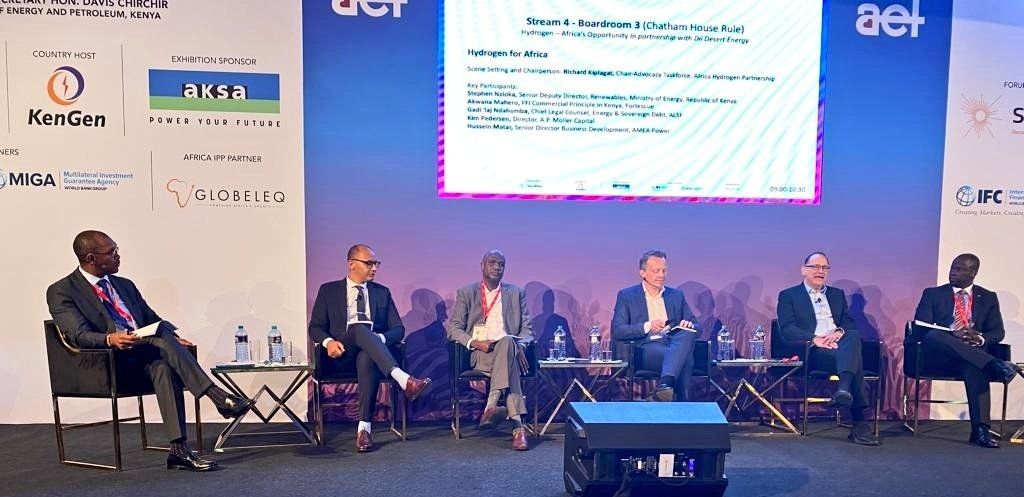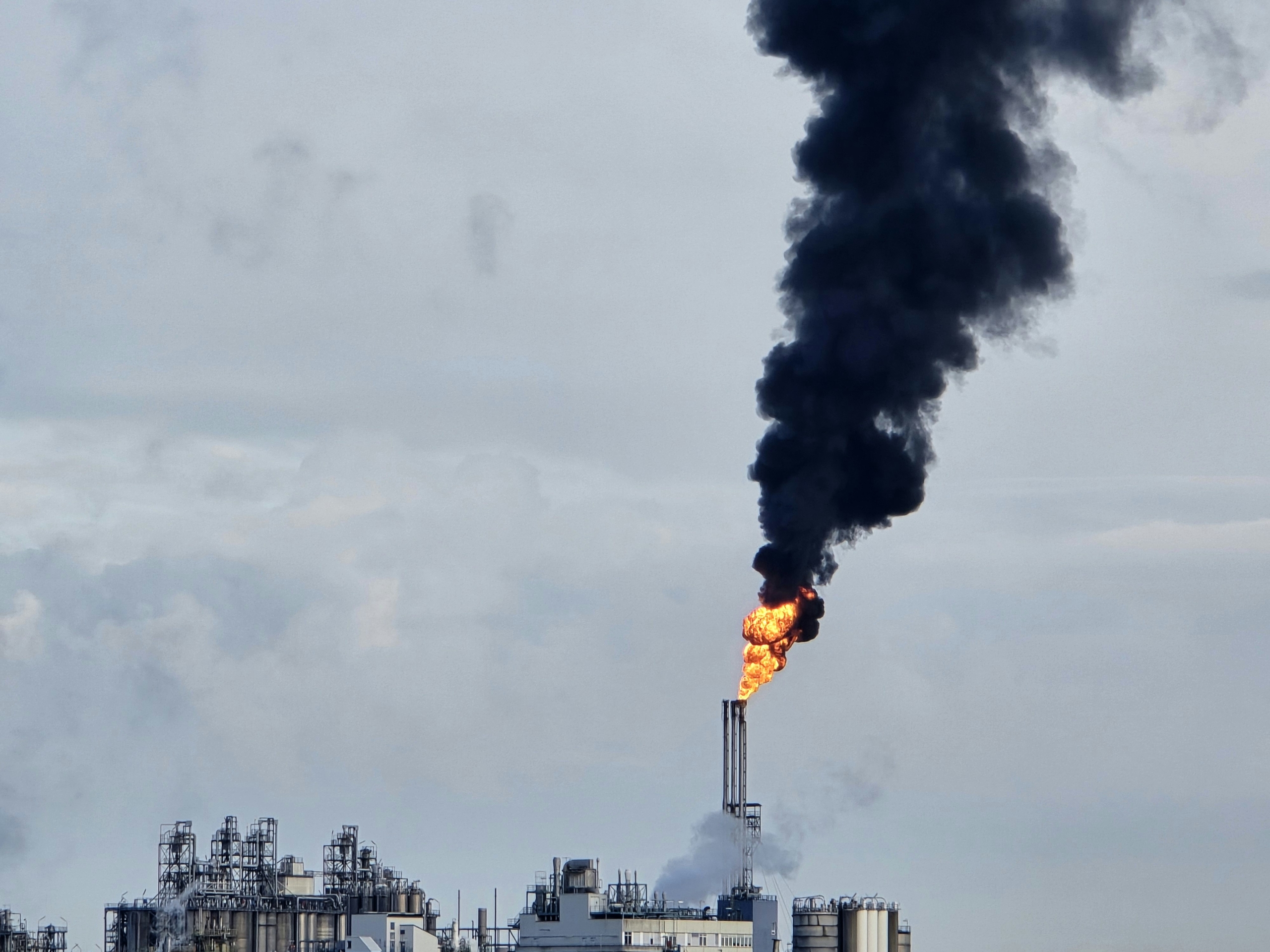We are excited to announce that Brink is now part of Africa Practice. Learn more
Green hydrogen – Africa’s moment

Africa’s resources have driven humanity’s advancement especially over the past two centuries. More recently, the continent’s copper, cobalt, nickel and lithium are at the cutting edge of the energy transition, its precious metals have enriched traders and acted as de facto currencies, while its forests serve as crucial carbon sinks. However, Africa has profited little from this abundance of riches.
The growing interest in Green hydrogen presents a major opportunity for the continent to capitalise on international demand for a new clean energy source. This time however, African states are changing the dynamic by actively taking charge of the strategic importance of its natural capital to drive a “Positive Green Growth Agenda”.
What is green hydrogen and why is it gaining prominence?
Green hydrogen is produced through electrolysis where water (H2O) is split into its fundamental elements – hydrogen (H2) and oxygen (O2) – using an electric current. What sets green hydrogen apart from other colours is that renewable energy drives the process, minimising its carbon footprint. Green hydrogen acts as a clean energy vector, storing power until it is required.
Green hydrogen production and utilisation
Africa possesses significant renewable energy potential with a potential of 15 GW of geothermal power, 10 TW of solar power, 350 GW of hydroelectric power, and 110 GW of wind power. To fully leverage the renewable energy potential, African nations and investors must utilise demand for Green Hydrogen to delink investments in renewable energy from the domestic off take of local power utilities and mini grids and explore the opportunity to sell Green hydrogen and its derivatives locally or globally. Key to this will be establishing export infrastructure for green hydrogen and green ammonia – a derivative which can be easily transported over long distances – and fostering a robust domestic market.
Green hydrogen offers a path to decarbonise hard-to-abate sectors such as freight, shipping, aviation, steel, chemical and cement production. Green hydrogen can also stabilise renewable energy supply and support grid stabilisation by providing long-term energy storage. The creation of green ammonia also offers a means to produce low cost fertiliser, enhance food security through improved agriculture, and drive a green industrial revolution with the potential to create 1.9 to 3.7 million jobs and boost GDP by USD 60 to 120 billion by 2050, according to research conducted by McKinsey & Company for Abu Dhabi renewable energy company Masdar.
What stands in the way?
The excitement around green hydrogen is not unfounded. Here, Africa has a means by which to grow into a net energy exporter while also driving its own industrialisation and combating climate change. This is a mighty challenge, with no shortage of barriers to overcome.
The globe is replete with infrastructure that reflects a century of fossil fuel dependence. Hydrogen transmission pipelines are currently limited to approximately 5,000 km globally, whereas natural gas pipelines span over 3 million km. While repurposing natural gas infrastructure is technically possible, hydrogen molecules are much smaller and lighter than those of hydrocarbons, making them more prone to leaking out of pipelines. Not all regions will be able to transform existing infrastructure, requiring the creation of an entirely new economy.
Green hydrogen production also poses demands on the environment. Electrolysis requires significant amounts of freshwater, raising concerns about water shortages in arid environments. This issue is particularly relevant for North African countries such as Morocco, Mauritania and Egypt – all of which are positioning themselves at the vanguard of the hydrogen economy despite their arid environments and susceptibility to climate risks. Balancing the water demands of green hydrogen production with the need for freshwater conservation is essential to ensure the long-term sustainability of the industry.
African governments will also need to adapt with the needs of environmentally conscious offtakers, with their exacting standards and complex regulatory barriers. Buyers of green hydrogen are likely to demand a degree of certification to verify that production was entirely from renewable sources. While the industry has still yet to coalesce around a certification standard, such programmes are critical to ensuring transparency and boosting demand for green hydrogen. As with standards introduced in the wake of the emergence of new technologies and data processing, Africa is unlikely to be a rule setter – but rather a rule taker. However, governments will need to develop stronger sectoral knowledge and regulatory capacity if they are to meet industry needs and establish confidence among potential buyers.
Optimism
But Africans are rising to the challenge and forging ties to scope out and develop opportunities in the emerging green hydrogen economy. This is exemplified by the creation of an industry body – the African Hydrogen Partnership (AHP) – in 2020 and the establishment of an intergovernmental forum – the Africa Green Hydrogen Alliance (AGHA) – in 2022. The AHP has promoted collaboration between industry, finance, science, and buyers, while the AGHA is facilitating knowledge sharing among the states leading the charge.
This approach is paying dividends. According to our proprietary data, 12 African countries are hosting active green hydrogen projects, while 19 possess a regulatory framework or national strategy dedicated to the nascent sector. The race is on to ensure that African nations capitalise on the development of the green hydrogen economy. This is Africa’s moment.
About the author
Richard Kiplagat is Africa Practice’s Group Director and Managing Director for East Africa, as well as serving as Chair of the AHP Advocacy Taskforce. He has decades of experience advising clients across numerous sectors, including energy, infrastructure, public health and the digital economy.
Proud to be BCorp. We are part of the global movement for an inclusive, equitable, and regenerative economic system. Learn more


